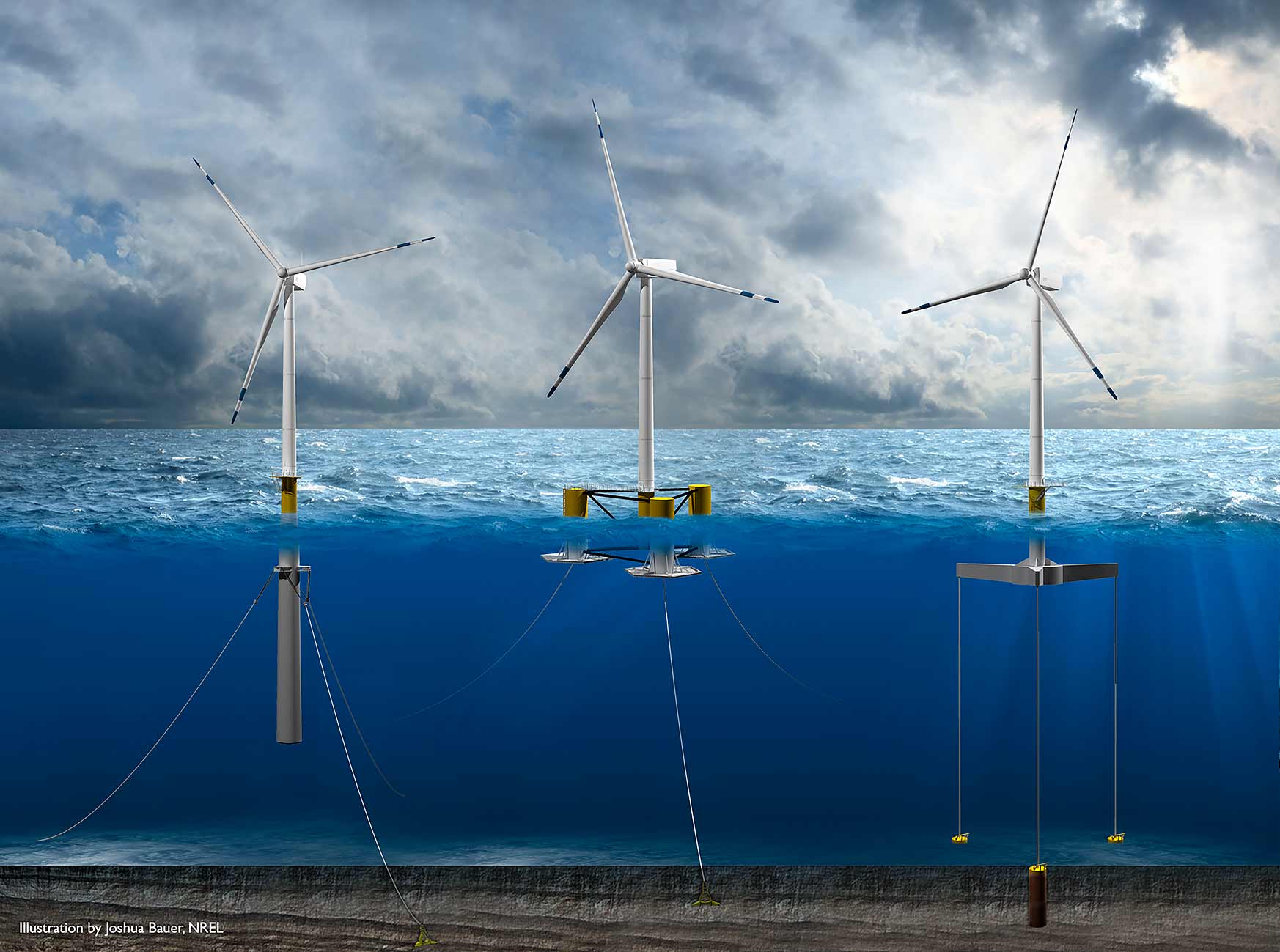NREL Market Report Finds U.S. Offshore Wind Industry Poised for Multigigawatt Surge

The National Renewable Energy Laboratory has been working to advance offshore wind technologies and markets since 2003. This simulation is one example of how NREL is working on future floating wind turbine technology. (Graphic by Josh Bauer, NREL)
Bolstered by the December 2016 commissioning of the Block Island Wind Farm—the nation’s first commercial offshore wind project—the U.S. offshore wind industry could be on the brink of a multigigawatt surge in development. Positive market signals are setting the stage for large-scale offshore wind development across the country, from Massachusetts to Hawaii, according to the 2016 Offshore Wind Technologies Market Report, written by a team of researchers at the U.S. Department of Energy's (DOE's) National Renewable Energy Laboratory (NREL).
Released on August 8, the report finds that:
- The U.S. offshore wind project development pipeline comprises more than 20 projects totaling 24,135 megawatts (MW) of potential installed capacity. Most of the near-term activity is concentrated in the Atlantic off the Northeast coast, but projects have been proposed in the Southeast Atlantic, the Pacific, the Gulf of Mexico, and the Great Lakes.
- Of the U.S. projects in deeper waters, where traditional bottom-mounted technologies are not feasible, proposed floating offshore wind projects now total 1,993 MW of announced capacity.
- News of the declining costs for offshore wind projects in Europe spurred confidence in the domestic U.S. offshore wind market over the past year. Several states, including Massachusetts, New York, and Maryland, have enacted new policy or strengthened their existing policy to support the development of more than 4,000 MW of offshore wind.
“The offshore wind market has made amazing progress in the last two years, and this report provides evidence about why that market acceleration is occurring,” said Walt Musial, NREL principal engineer and lead author of the report. “Around the world, several events have transpired in parallel to demonstrate that offshore wind is a viable U.S. market. These events include the Block Island Wind Farm, which became operational in 2016; the drop in offshore prices on the European market, which is driving U.S. interest in offshore development; and policies that have resulted in promotion and stimulation of offshore wind development by local and state governments.”
NREL began working in offshore wind research in 2003 at the request of the Energy Department, which needed a program to address the growing interest in offshore wind technology and innovation both in Europe and domestically. Since then, NREL’s work in offshore wind has included:
- Working with DOE and the Bureau of Ocean Energy Management (and previously the Minerals Management Service) to identify viable sites and technology that can be deployed in the United States
- Working with DOE to create partnerships and industry relationships that could lead to commercial systems and projects
- Developing economic models and analysis that demonstrate the cost reduction potential and lower the uncertainty of the cost of offshore wind
- Developing concepts that have accelerated technology development by making available engineering tools to develop offshore turbines
- Conducting resource assessments that have validated offshore wind as a potential major contributor to the electric grid
- Providing analysis to enable understanding of offshore wind’s potential
- Modeling regional grid systems to help utilities understand the impacts of offshore wind when injected in the system (as with solar and land-based wind).
“The offshore wind market today is the result of a long process of technology and market cultivation,” Musial said. “NREL will continue to be at the forefront to help the industry expand beyond the northeastern United States and into the Great Lakes, Southeast, Gulf of Mexico, the deep waters off the Pacific, and further into the Atlantic to meet demand.”
The 2016 Offshore Wind Technologies Market Report is designed to provide offshore wind policymakers, regulators, developers, researchers, engineers, financiers, and supply chain participants with quantitative information about the offshore wind market, technology, and cost trends in the United States and worldwide. The report covers the status of the 111 operating offshore wind projects in the global fleet through December 2016 and analyzes 593 projects at various stages of maturity within the project life cycle.
Last Updated May 28, 2025
